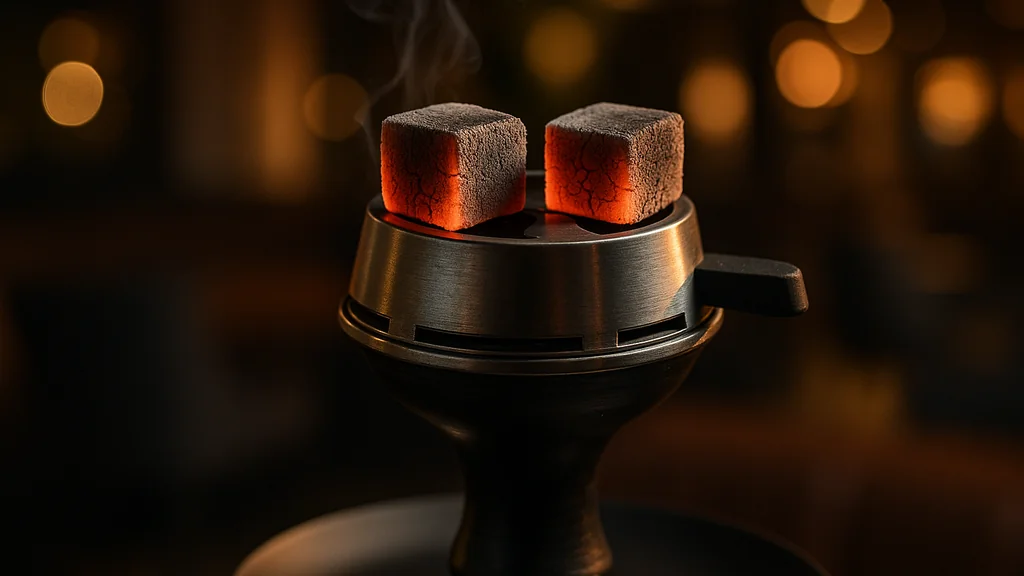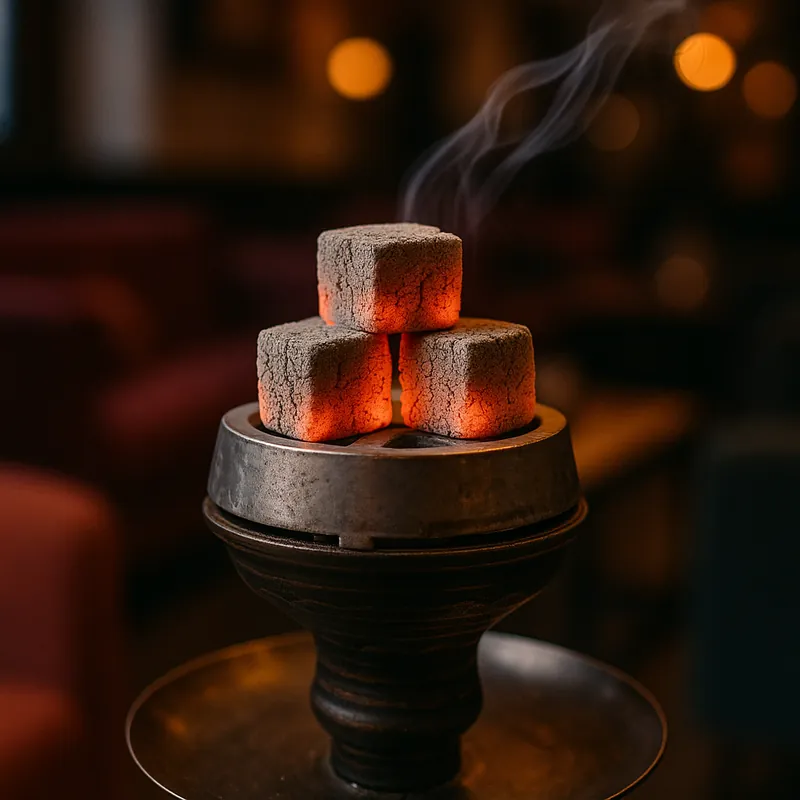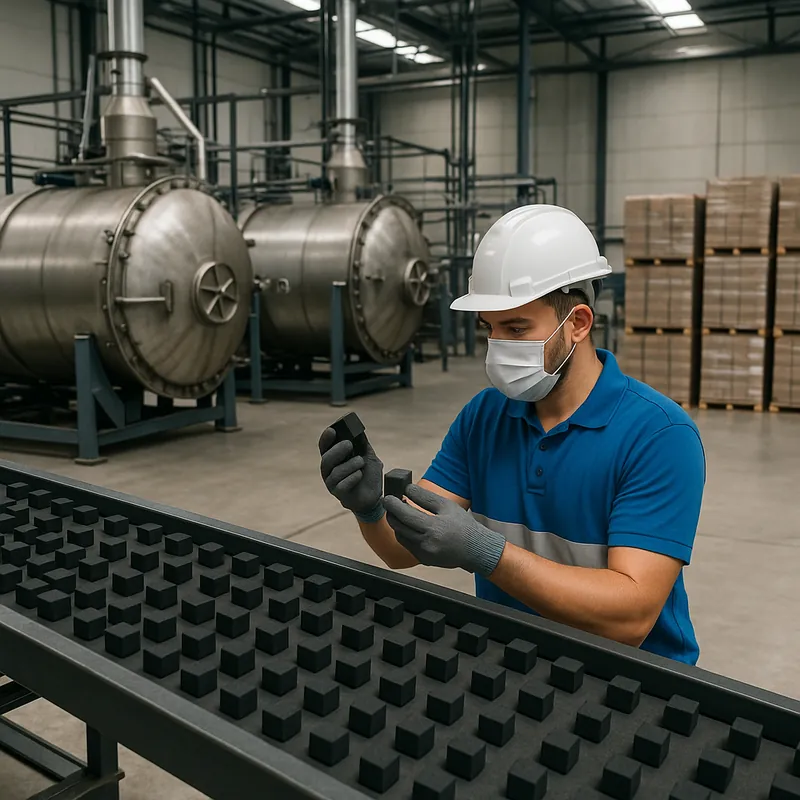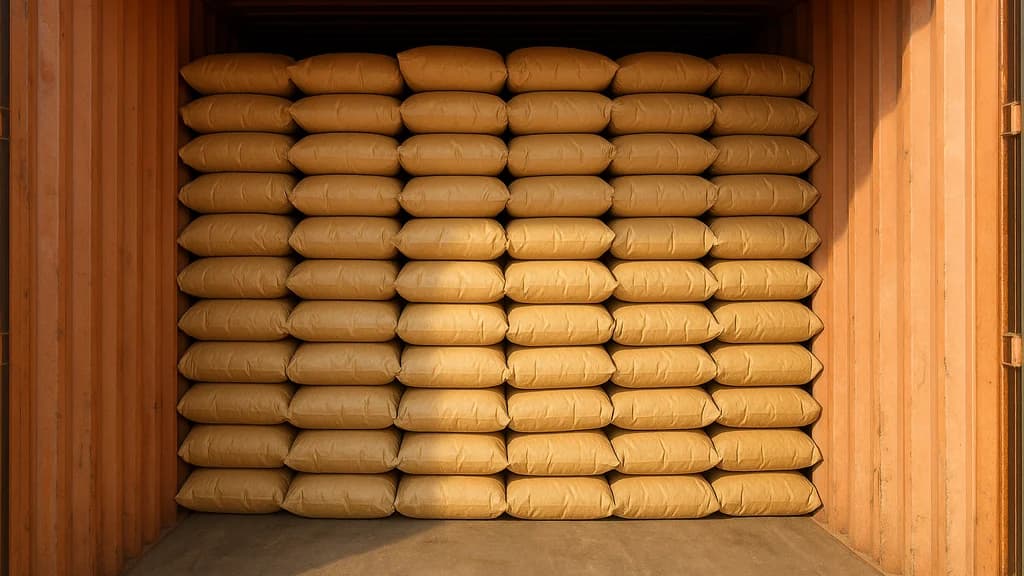Why Indonesian coconut shell charcoal for shisha gives cleaner heat, low ash, and stable flavor—plus the specs that matter and simple tests to verify.
If you care about flavor, consistency, and a clean session, the charcoal you choose matters more than most people realize. After years making and testing briquettes for lounges and home smokers in 50+ countries, we’ve learned where the real differences show up—and why Indonesian coconut shell charcoal consistently wins for shisha.
What’s Happening Now
Hookah has gone decidedly “natural.” Over the last year, lounges from Dubai to Düsseldorf have switched from quick-light tablets to coconut shell briquettes. Health and indoor air quality are part of it, but so is performance. Natural coals deliver steadier heat with less odor and fewer flare-ups. The most requested size globally? 26mm cubes, because they bridge long burn time with controllable heat—especially with heat management devices like the Kaloud Lotus 1 Plus.

Indonesia sits at the center of this shift. The country’s coconut industry (Java, Sulawesi, Sumatra) produces a steady stream of hard, dense shells—the ideal feedstock for high-fixed-carbon char. Paired with modern retort carbonization (cleaner, more controlled than pit kilns), the result is briquettes that burn longer, cleaner, and with less variation box-to-box. We see it on our production floor daily: tighter moisture control, more uniform density, and ash levels that stay low even at volume.
Supply chain realities also matter. With shipping routes still volatile and freight rates bouncing, consistency is king. Buyers are prioritizing producers who can hit spec every time and prove it with lab tests. In the last six months, we’re fielding more requests for heavy metal and PAH testing, EUDR-aligned traceability, and formal COAs. Natural coals aren’t a trend anymore—they’re the standard. The difference is which ones actually deliver. That’s where Indonesian briquettes stand out.
What makes Indonesian coconut shell charcoal different from other coals?
Three things: raw material quality, carbonization control, and compression. Indonesian shells are denser and more uniform because of the coconut varieties and mature harvesting. Retort kilns give cleaner, higher fixed carbon with fewer volatile residues (read: less smell). And high-tonnage presses with precise binders make cubes that don’t crack, don’t spark, and burn predictably. The upshot is less ash, more heat stability, and very little odor.
Why This Matters More Than Ever
We’re seeing longer indoor sessions, wider use of HMDs, and more heat-sensitive tobaccos and dark leaf blends. Inconsistent charcoal ruins that experience—harsh smoke at 30 minutes, flat flavor at 60, ash everywhere. Low-ash, low-odor Indonesian briquettes preserve the profile you paid for. When the coal disappears into the background, the blend shows up fully.
Cost pressure hasn’t gone away either. There are cheaper briquettes out there, often with sawdust or coal fillers to cut price. They burn hot at first, then die, and leave 3–5% ash that chokes your bowl. If you’re running a lounge, that’s more coil time, more rotations, and more customer complaints. Paying for better briquettes easily returns in fewer changeouts and happier tables. At home, it’s the difference between a 90-minute conversation and a 40-minute rescue mission.
Does coconut shell charcoal change the taste of shisha?
Properly made coconut briquettes shouldn’t add taste. If you notice a chemical or “off” smell, it’s usually excess volatiles from poor carbonization, a low-grade binder, or—common with quick-light tablets—accelerants like nitrates. High-fixed-carbon, retort-made Indonesian briquettes with food-grade tapioca binder burn neutral. In our tests, flavor clarity improves because heat is steadier and ash stays out of the airflow.
Indonesian vs Vietnamese coconut shell charcoal: what’s the real difference?
Vietnam produces excellent briquettes too, and top-tier Vietnamese factories can rival premium Indonesian specs. The consistent edge we see from Indonesia is scale and uniformity: steadier shell supply, more retort capacity, and smaller spec drift over time. Many Vietnamese products run slightly higher ash or softer compression unless you buy from the best producers. Bottom line: origin matters, but the factory’s process and QC matter more. Ask for data.
Practical takeaway: look for ash ≤2.2%, fixed carbon ≥78%, moisture ≤5%, and compression that survives a waist-high drop test without crumbling. Whether Indonesian or Vietnamese, those numbers correlate with a better session.
What Smart People Are Doing
The best lounges and retailers aren’t guessing. They specify, test, and standardize.
- They set specs by outcome: burn time, ash %, cube tolerance (±1mm), odor on ignition, and HMD fit.
- They control lighting: a 1000–1500W coil burner, 5–8 minutes until fully ashed on all sides, then into the HMD or onto double foil. No half-lit cubes, no direct gas flames that imprint sulfur or kerosene notes.
- They match cube size to bowl and device. 26mm for long sessions and larger bowls, 25mm or 22mm for tighter HMDs or heat-sensitive blends.
Our own Shisha Charcoal is built around those needs: low smoke, low ash, and long, even heat with Kaloud Lotus compatibility. On a proper burner, they ignite quickly for natural coals (fully lit in 6–7 minutes) and settle into a clean, steady burn.
How long do 26mm Indonesian coconut briquettes typically last?
In lounge conditions with normal airflow, 26mm cubes run about 90–120 minutes. On an HMD with the lid partially closed, we see closer to two hours. Outdoors or with aggressive purging, expect closer to 80–95 minutes. 25mm cubes usually land in the 70–90 minute range. If you’re swapping at 50 minutes, suspect under-lighting or high ash briquettes.
25mm vs 26mm cubes: which should I choose?
- Choose 26mm if you want longer sessions, you’re using a Kaloud Lotus 1 Plus or similar HMD, and your bowl can handle a touch more mass. Heat management becomes easier once they’re fully lit.
- Choose 25mm if your HMD is tight, you prefer nuanced heat for delicate flavors, or you smoke in smaller rooms where heat builds fast. Some lounges start with 25mm and add a quarter cube later for a boost.
Why is low ash important for hookah sessions?
Low ash (≤2.2%) means fewer flakes dropping into the HMD or foil, less airflow disruption, and more consistent heat. High ash coals force frequent taps and rotations, which spikes and crashes bowl temperature—exactly what mutes flavor and causes throat hit. Low ash also keeps your HMD vents from clogging so you don’t overdraw and scorch the top of the pack.
Is Indonesian coconut shell charcoal chemical-free and safe?
Natural coconut briquettes should contain two things: carbonized coconut shell and a food-grade binder (typically 3–5% tapioca starch). No nitrates, no borax, no petroleum accelerants. Retort carbonization and proper curing minimize residual volatiles, which is why the smell is clean. Reputable producers back this with third-party lab tests for heavy metals and PAHs. If you need documentation, ask for a COA on the specific batch.
How many cubes should I use with a Kaloud Lotus 1 Plus?
What works in practice:
- Start with 2 x 26mm, lid on for the first 3–5 minutes to bring the bowl up, then crack it or remove it to maintain.
- If the tobacco is heat-tolerant or you’re outdoors, add a third cube after 15–20 minutes.
- For 25mm, 3 cubes is common, manage with lid position and brief lifts to vent excess heat.
Rule of thumb: aim for steady bubbles and comfortable pull resistance; if flavor thins, add heat or rotate; if it gets sharp or bitter, vent or drop a cube.
How do I light coconut shell briquettes without affecting flavor?
Use an electric coil or induction coil designed for coals. Heat the cubes until every face is fully ashed and edges are glowing—usually 6–8 minutes total with one flip. Don’t rush half-lit cubes into the HMD; that’s where off-notes come from. Avoid lighter fluid, stovetop gas with food residue, or alcohol dips. A small wind cover or the HMD lid helps stabilize the first few minutes; after that, let airflow do the work.
How to Stay Ahead
Specs and supply are converging at the top end, so the edge comes from your process and partner selection.
- Audit your charcoal with simple tests. Burn a single cube to completion on foil and weigh the remaining ash; >2.5% is a red flag. Check for odor on ignition and at 10 minutes. Drop-test a cube from waist height—excessive crumbling points to poor compression or moisture issues.
- Match product to use case. For long indoor sessions, go 26mm premium briquettes with ash ≤2.2% and fixed carbon ≥78%. For smaller bowls or faster turnover, 25mm works well.
- Lock in packaging and storage. Moisture is the silent killer. Choose inner plastic with a decent barrier, keep boxes off the floor, and store in a dry space. If you’re in a humid climate, a few grams of desiccant per kilo helps.
- Build a supplier relationship around data. Ask for batch-level COAs, size tolerance reports, and compression/abrasion metrics. Agree on corrective actions before issues arise and verify with pre-shipment samples.
If you also run grills or kitchens, one bonus: our BBQ Coconut Shell Charcoal Briquettes deliver the same low-ash, long-burn performance for service hours, with 4–6 hour burn time and high, even heat—useful for restaurants that want predictable fire without constant tending.
How can I tell if coconut charcoal is authentic or contains fillers?
A few quick checks:
- Ash color and amount: premium coco ash is fine and light gray-white, not dark or gritty. High volume points to fillers.
- Smell on ignition: natural coco is neutral; chemical or coal-tar notes suggest contamination or poor carbonization.
- Cross-section: break a cube—uniform texture is good. Visible wood fibers or layered structure can mean mixed raw materials.
- Water and float tests are unreliable. Density varies by press and moisture, so don’t rely on sink/float. Weight-to-ash and odor tell you more.
- When in doubt, get a lab ash/fixed carbon test. It’s inexpensive and settles arguments quickly.
What to do next:
- Define your spec (ash, fixed carbon, size, compression) and get two to three samples side-by-side.
- Test them in your actual setup for a week. Track burn times, rotations, and customer feedback.
- Choose the line that hits your workflow, then lock in consistent batches and reorder cycles.
If you have questions about Why Indonesian Coconut Shell Charcoal is the Best for Shisha and Hookah or need expert guidance, contact our team(/contact).
In our experience, the right charcoal disappears into the background—and that’s the highest compliment. Indonesian coconut shell briquettes, done right, let your bowl do the talking: clean heat, steady sessions, real flavor. That’s why people who care stick with them.



